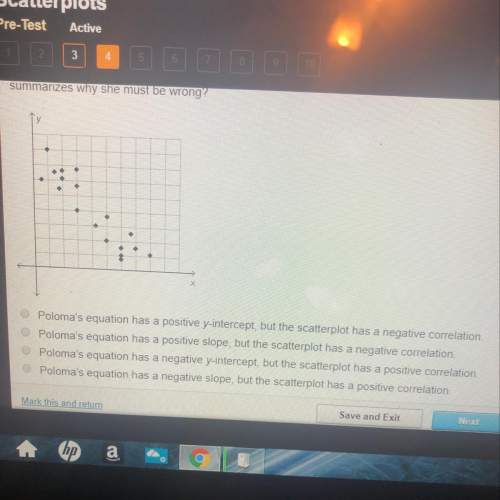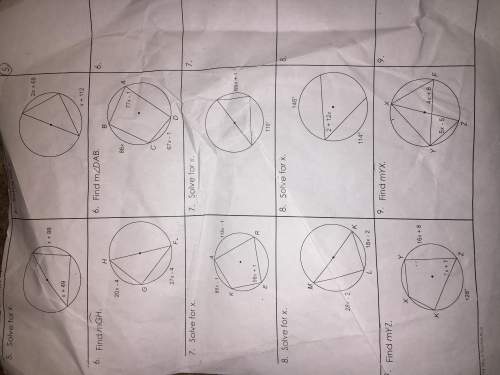
Mathematics, 05.02.2021 22:00 yialefi
The population of a certain species of insect is given by a differentiable function P, where P(t) is the number of insects in the population, in millions, at time t, where t is measured in days. When the environmental conditions are right, the population increases with respect to time at a rate that is directly proportional to the population. Starting August 15, the conditions were favorable and the population began increasing. On August 20, five days later, there were an estimated 10 million insects and the population was increasing at a rate of 2 million insects per day. Which of the following is a differential equation that models this situation?
a. P=2(t−5)+10
b. dP/dt=2/5t
c. dP/dt=1/5P
d. dP/dt=5P

Answers: 2
Another question on Mathematics

Mathematics, 21.06.2019 22:00
Match the scale and the actual area to the area of the corresponding scale drawing. scale: 1 inch to 4 feet actual area: 128 square feet scale: 1 inch to 7 feet actual area: 147 square feet scale: 1 inch to 8 feet actual area: 256 square feet scale: 1 inch to 5 feet actual area: 225 square feet area of scale drawing scale and actual area scale drawing area: 3 square inches arrowright scale drawing area: 8 square inches arrowright scale drawing area: 4 square inches arrowright scale drawing area: 9 square inches arrowright
Answers: 2

Mathematics, 21.06.2019 22:20
The mean of 10 values is 19. if further 5 values areincluded the mean becomes 20. what is the meanthese five additional values? a) 10b) 15c) 11d) 22
Answers: 1

Mathematics, 22.06.2019 00:00
Darragh has a golden eagle coin in his collection with a mass of 13.551\,\text{g}13.551g. an uncirculated golden eagle coin has a mass of 13.714\,\text{g}13.714g.
Answers: 2

You know the right answer?
The population of a certain species of insect is given by a differentiable function P, where P(t) is...
Questions


















Computers and Technology, 31.07.2019 23:10

Mathematics, 31.07.2019 23:10

Mathematics, 31.07.2019 23:10





